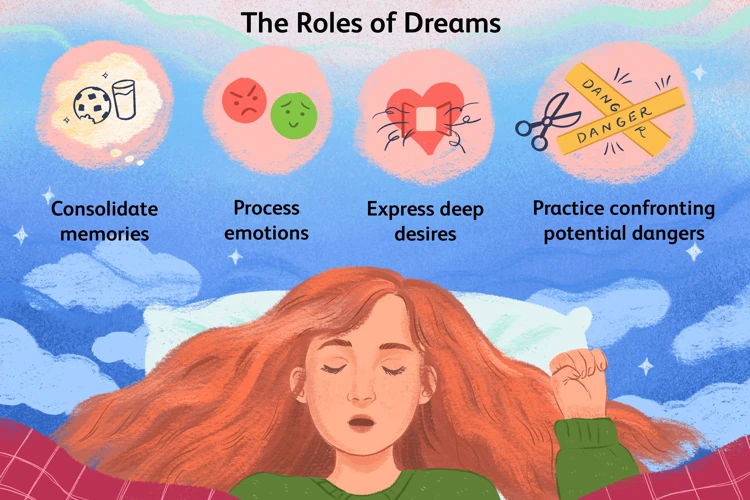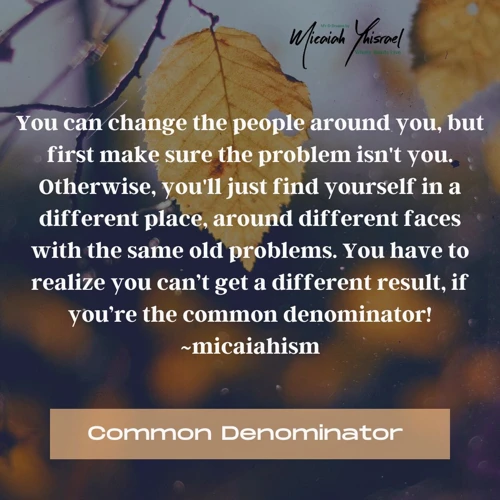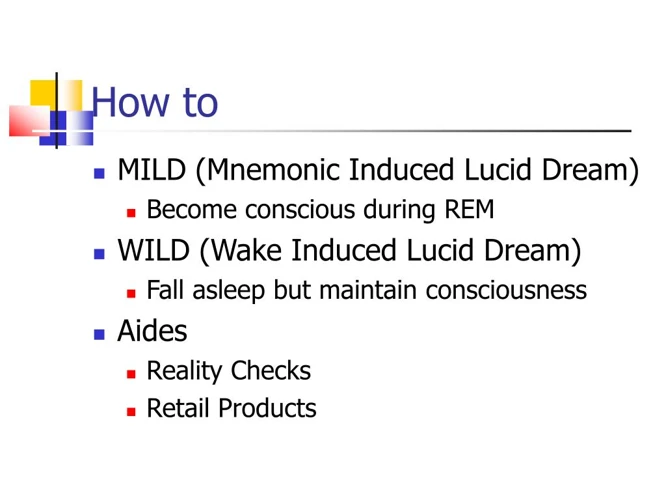Have you ever wished to have complete control over your dreams, where you can shape the world around you and experience anything your imagination desires? This is the concept of lucid dreaming, where the dreamer becomes aware that they are dreaming and can actively participate in and manipulate their dream experiences. If you’ve ever been intrigued by the idea of lucid dreaming but didn’t know where to begin, then you’re in luck! In this article, we will be exploring the power of mnemonic induction and providing you with a step-by-step guide on how to induce lucid dreams using mnemonic techniques. Get ready to unlock the extraordinary world of lucid dreaming and embark on incredible adventures in your sleep!
What are Lucid Dreams?

Lucid dreams, as mentioned earlier, are dreams in which the dreamer becomes aware that they are dreaming while they are still in the dream state. This awareness allows the dreamer to have a sense of control and agency within their dreamscape. They can consciously navigate and shape the dream environment, interact with dream characters, and even manipulate the events that occur. What distinguishes lucid dreams from regular dreams is this heightened level of self-awareness and the ability to actively participate in the dream rather than being a passive observer. Lucid dreams can be incredibly vivid and realistic, often indistinguishable from waking life. They provide a playground for the imagination, where anything is possible. The ability to have lucid dreams is a skill that can be developed and honed through various techniques and practices, such as mnemonic induction. These dreams offer not only entertainment and excitement but also a potential for personal growth, exploration, and even therapy. Lucid dreaming has been recognized as a powerful tool for self-discovery, problem-solving, and even spiritual experiences. By delving into the world of lucid dreams, individuals can unlock a realm of endless possibilities and gain a deeper understanding of their own consciousness and the nature of reality. So, let’s dive deeper into the techniques and methods that can help you induce and explore lucid dreams. But first, let’s explore the history and origins of lucid dreaming and its significance in various cultures throughout time.
The Power of Mnemonic Induction

Mnemonic induction is a powerful technique that can greatly enhance your ability to have lucid dreams. It involves the use of mnemonics, which are memory aids or triggers, to prompt the dreamer to recognize when they are dreaming. By incorporating mnemonic induction into your lucid dreaming practice, you are essentially training your mind to become more aware and attentive to the dream state. This technique helps bridge the gap between the conscious and subconscious mind, allowing you to take control and actively participate in your dreams. The power of mnemonic induction lies in its ability to improve dream recall and trigger lucidity. By consistently engaging in activities such as dream journaling and reality checks, you strengthen your memory of dreams and increase your chances of recognizing dream signs and triggers. Mnemonic induction acts as a foundation for other techniques and exercises, enabling you to have more frequent and vivid lucid dreams. So, if you’re ready to unleash the full potential of your dreaming mind, let’s explore the step-by-step guide to mnemonic induction and unlock the fascinating world of lucid dreaming. But before that, let’s delve into the importance of enhancing dream recall and how it plays a vital role in the practice of lucid dreaming.
Benefits of Mnemonic Induction
Mnemonic induction, as a technique for inducing lucid dreams, offers several benefits for aspiring lucid dreamers. Let’s explore the advantages of using mnemonic induction to enhance your lucid dreaming practice:
1. Improved Dream Recall: Mnemonic induction techniques, such as dream journaling and using mnemonic devices, help enhance your dream recall abilities. Keeping a dream journal allows you to record and remember your dreams in detail, making it easier to recognize dream signs and patterns. This increased dream recall improves your overall awareness of the dream state and increases your chances of becoming lucid.
2. Heightened Self-Awareness: Mnemonic induction techniques involve training your mind to be more attentive and self-reflective. This heightened self-awareness carries over into your dreams, making it easier to recognize when you are in a dream. By practicing mnemonic induction, you cultivate a habit of questioning your reality, which translates into increased lucidity during dream states.
3. Enhanced Reality Checks: Mnemonic induction incorporates reality checks as a crucial component of the technique. Reality checks are actions or tests performed throughout the day to determine whether you are dreaming or awake. By consistently practicing reality checks, you develop a habit of questioning reality, which naturally extends into your dreams. This habit increases the likelihood of becoming lucid when you encounter dream-like scenarios.
4. Greater Dream Control: Mnemonic induction techniques strengthen your ability to control and influence your dreams. By establishing a strong foundation of lucidity within your dreams, you gain the power to modify the dream environment and direct the unfolding of dream events. This control allows you to engage in exciting adventures, explore new realms, and even practice skills or overcome fears within the dream state.
5. Spiritual and Transcendent Experiences: For those seeking deeper spiritual experiences and self-exploration, mnemonic induction can be a gateway. Lucid dreaming has been linked to out-of-body experiences, astral projection, and encounters with the divine. By cultivating lucidity through mnemonic induction, individuals may open themselves to these profound and transformative experiences. To delve further into the realm of spiritual experiences in lucid dreams, you can explore out-of-body experiences and their connection to lucid dreaming.
Mnemonic induction techniques offer a systematic and effective approach to lucid dreaming. They provide the foundation for developing lucidity within dreams, empowering individuals to take control of their dream experiences and unlock the vast potential of the dream world. So, let’s dive into the step-by-step guide to implementing mnemonic induction methods and embark on an incredible journey into the realm of lucid dreaming.
How Mnemonic Induction Works
To understand how mnemonic induction works, it’s helpful to break down the process into its individual components. When it comes to lucid dreaming, mnemonic induction refers to the use of memory cues and techniques to increase dream recall and enhance the likelihood of becoming lucid. Here’s a breakdown of how mnemonic induction works:
1. Dream Journaling: Dream journaling is a fundamental practice in mnemonic induction. It involves keeping a journal or notebook by your bedside and recording your dreams immediately upon waking up. This helps improve dream recall, as it trains your brain to pay closer attention to your dreams and helps you recognize recurring patterns or dream signs.
2. Reality Checks: Reality checks are another crucial aspect of mnemonic induction. These are simple actions or tasks performed throughout the day to test whether you are in a dream or waking reality. By incorporating reality checks into your daily routine, you cultivate a habit of questioning your reality, which carries over into your dreams. When you perform a reality check in a dream and find that the result is inconsistent with waking reality (e.g., trying to push your finger through your palm), you become aware that you are dreaming.
3. Mnemonic Techniques: Mnemonic techniques involve creating and using memory cues to enhance dream recall and increase the chances of lucidity. These techniques can range from creating mental associations or triggers to using mnemonic devices, such as visual imagery or acronyms, to aid in remembering specific dream signs or intentions.
4. Mnemonic Induction Exercises: These exercises are designed to increase the frequency of lucid dreams. Techniques such as the MILD (Mnemonic Induction of Lucid Dreams) technique involve setting intentions and creating affirmations or mantras to repeat before sleep, focusing your mind on becoming lucid in your dreams.
By combining dream journaling, reality checks, mnemonic techniques, and induction exercises, you create a comprehensive approach to increasing your chances of having lucid dreams. The goal is to train your brain to recognize dream patterns, trigger the realization that you are dreaming, and actively engage with and influence the dream experience. Now, let’s delve deeper into each step of mnemonic induction and explore the specific techniques and exercises for inducing lucid dreams.
Step 1: Dream Journaling

Dream journaling is a crucial first step in the process of inducing lucid dreams. Keeping a dream journal involves recording your dreams upon awakening. This practice serves multiple purposes and provides valuable insights into your dream patterns and content. When you wake up, take a few moments to reflect on your dreams and jot down any details you can remember. Be sure to include specific elements such as people, locations, emotions, and events. This act of writing not only helps solidify the memories of your dreams but also trains your brain to prioritize dream recall. Over time, you may notice recurring themes or symbols in your dreams, which can act as potential triggers for lucidity. By regularly engaging in dream journaling, you are actively building a bridge between your waking and dreaming states, increasing your awareness of the dream world and setting the foundation for lucid dreaming. To enhance your dream recall abilities, you can also try techniques like enhancing dream recall through specific habits and practices. So, grab your journal and pen, and let’s embark on the exciting journey of exploring your dreams!
Step 2: Reality Checks

Step 2: Reality Checks are an essential component of inducing lucid dreams. These checks act as a reality-testing mechanism to help you determine whether you are dreaming or awake. The idea behind reality checks is to establish a habit of questioning reality throughout your waking hours so that eventually, this habit carries over into your dreams, triggering lucidity. There are several types of reality checks you can perform, such as the finger through the palm technique, where you try to push your finger through the palm of your hand to see if it passes through. Another common method is the nose pinch reality check, where you pinch your nose closed and try to breathe through it. If you can still breathe, then you are likely in a dream. It is recommended to perform these reality checks several times a day to reinforce the habit. Additionally, it is crucial to choose times when you are most likely to be in a dream, such as when you encounter unusual or odd situations or when you notice patterns or inconsistencies in your surroundings. By incorporating reality checks into your daily routine, you increase the chances of recognizing the dream state and entering into a lucid dream.
Types of Reality Checks
There are various types of reality checks that you can incorporate into your daily routine to increase your chances of recognizing when you are in a dream. These reality checks serve as a way to test your reality and determine if you are in a dream or in waking life. Here are some commonly used reality checks:
- Nose Pinch Test: Pinch your nose and try to breathe through it. In a dream, you will still be able to breathe, even with your nose pinched.
- Reading Test: Look at a piece of text, look away, and then try to read it again. In a dream, the text will often change or appear distorted when you look back at it.
- Mirror Test: Look at yourself in a mirror. In a dream, your reflection may appear blurry, distorted, or may look different from your actual appearance.
- Finger Test: Try to push one finger through the palm of your other hand. In a dream, your finger may pass through your palm as if it were made of liquid or air.
By incorporating these reality checks into your daily routine, you train your mind to question the reality of your surroundings. This habit will eventually carry over into your dreams, increasing the likelihood of realizing that you are dreaming. Remember to perform these reality checks with a genuine curiosity and open-mindedness to truly question your state of reality. As you become more consistent with performing reality checks, you will enhance your ability to become lucid in your dreams and unlock the fascinating world of lucid dreaming.
When to Perform Reality Checks
When it comes to performing reality checks, timing is crucial. To increase the chances of reality checks carrying over into your dreams, it’s important to perform them at specific moments throughout the day. Here are some key instances when you should perform reality checks:
- Triggered Events: Whenever you encounter events or situations that have a high likelihood of occurring in dreams, such as entering a new location, meeting new people, or experiencing intense emotions, it’s an opportune time to perform a reality check. The sudden change or intensity can serve as a trigger to question your reality.
- Habitual Actions: Another effective time to perform reality checks is during routine actions that you frequently perform in your waking life. This could be things like checking the time, looking at your reflection, or flipping a light switch. By incorporating reality checks into these habitual actions, you train your mind to question reality in both waking life and dreams.
- Dream Recall: Immediately upon waking up from a dream, it’s highly recommended to perform a reality check. Dreams tend to fade rapidly from memory once you wake up, so performing a reality check helps you distinguish between the dream world and reality. This practice also strengthens your dream recall abilities, making it easier to recognize dreams in the future.
By consistently performing reality checks during these specific instances, you create a strong association between reality checks and the dream state. This association will increase the likelihood of performing reality checks while you’re actually dreaming, allowing you to become aware of your dream state and achieve lucidity. So, make a habit of performing reality checks during triggered events, habitual actions, and upon waking up from a dream to enhance your chances of having lucid dreams.
Step 3: Mnemonic Techniques

Step 3: Mnemonic Techniques are an essential component of inducing lucid dreams. These techniques involve utilizing memory aids and mental cues to enhance dream recall and increase self-awareness within dreams. One effective mnemonic technique is creating dream recall cues, which involves setting intention before sleep to remember dreams upon waking. Keeping a dream journal by your bedside and recording any dream fragments or details immediately upon waking can significantly improve dream recall. Another powerful mnemonic technique is using mnemonic devices such as visual imagery or word associations to enhance dream lucidity. For example, associating a specific word or image with the intention to become lucid in a dream can act as a trigger to prompt lucidity within the dream state. By incorporating these mnemonic techniques into your daily routine and bedtime rituals, you can train your mind to become more attuned to the dream world and increase your chances of experiencing lucid dreams. Let’s explore the practical exercises and methods used in for inducing lucid dreams.
Creating Dream Recall Cues
Creating dream recall cues is an essential step in the process of inducing lucid dreams through mnemonic techniques. These cues act as reminders or triggers to help you remember and recognize your dreams, increasing your chances of becoming lucid. Here are some effective methods for creating dream recall cues:
1. Dream Journal: Keep a dream journal by your bedside and make it a habit to write down your dreams as soon as you wake up. This practice strengthens your dream recall abilities and helps you identify recurring themes, symbols, or patterns in your dreams. The act of writing also serves as a cue for your mind to focus on your dreams.
2. Visual Reminders: Place visual cues or reminders around your living space that prompt you to think about your dreams. For example, you can hang pictures of dream-related imagery, such as clouds, stars, or flying, or place objects like dream catchers or a small statue of a dream-related symbol on your desk.
3. Bedtime Affirmations: Before going to bed, repeat affirmations like “I will remember my dreams” or “I am aware in my dreams” to program your subconscious mind to prioritize dream recall. These positive statements serve as cues to your mind to focus on your dreams and increase your chances of remembering them upon waking.
4. Reality Check Triggers: Associate reality checks with certain cues or triggers in your daily life. For example, every time you walk through a doorway or hear a specific sound, perform a reality check. This helps train your brain to question the reality of your surroundings, increasing the likelihood of doing the same during a dream.
5. Mnemonic Devices: Use mnemonic devices, such as acronyms or visualizations, to help you remember your dreams. Create a phrase or keyword that represents your intention to recall dreams, such as “DREAM” (Dreams Reveal Extraordinary And Magical experiences), and repeat it to yourself before sleep or upon waking up.
By incorporating these techniques into your daily routine, you will enhance your ability to recall your dreams and increase the chances of becoming lucid within them. Remember, consistent practice and patience are key to developing strong dream recall cues.
Using Mnemonic Devices
Mnemonic devices are powerful tools that can greatly enhance your ability to induce lucid dreams. These devices serve as reminders or prompts that help you remember to perform reality checks or trigger lucidity in your dreams. One popular mnemonic device is the use of dream recall cues. These cues can be a specific object, symbol, or even a phrase that you associate with lucidity. For example, you can choose a symbol like a lightbulb or a phrase like “Am I dreaming?” Whenever you encounter your chosen cue during waking hours, it serves as a trigger to remind you to question your reality and perform a reality check. The idea is that with enough repetition and association, these cues will carry over into your dreams, prompting you to become lucid. Another mnemonic device that can be effective is creating associations or connections between specific activities or events during the day and the act of lucid dreaming. For example, you can choose to perform a reality check every time you see a specific color or hear a particular sound. By consistently linking these activities with the practice of lucid dreaming, you are training your mind to be more aware and alert, increasing the likelihood of lucidity in your dreams. Mnemonic devices act as constant reminders and can help cultivate a conscious mindset that carries over into your dream world. By integrating these devices into your daily routine and making them a habit, you are conditioning your mind to question reality and increase your chances of experiencing lucid dreams. So, start experimenting with different mnemonic devices and find the ones that resonate with you the most. It may take some time and practice, but with consistency and dedication, you can significantly enhance your ability to induce and maintain lucidity in your dreams.
Step 4: Mnemonic Induction Exercises

Step 4: Mnemonic Induction Exercises are an essential part of the process to induce lucid dreams through mnemonic techniques. These exercises involve utilizing specific methods and practices to enhance dream recall, heighten self-awareness, and improve the ability to recognize the dream state. One of the key techniques used in mnemonic induction exercises is the Mnemonic Induction of Lucid Dreams (MILD) technique. This technique involves setting an intention to remember the dream and become lucid through the use of affirmations and visualization before going to sleep. By repeating a specific phrase, such as “I will remember that I am dreaming” or “I will recognize when I am dreaming,” and visualizing yourself becoming lucid in a dream scenario, you are programming your mind to achieve lucidity during sleep. Another effective exercise in this step is visualization and affirmations, where you create mental images of yourself becoming aware and in control of your dreams while affirming positive statements about lucid dreaming. Additionally, incorporating meditation and mindfulness practices can help improve focus, relaxation, and self-awareness, all of which are beneficial for inducing lucid dreams. Through these exercises, you are training your mind to be more attuned to the dream state and increasing the chances of experiencing lucidity.
Mnemonic Induction of Lucid Dreams Technique
The Mnemonic Induction of Lucid Dreams (MILD) technique is a popular and effective method for inducing lucid dreams. It is based on the idea of using memory cues and associations to increase dream recall and trigger lucidity. Here’s how the MILD technique works:
1. Set your intention: Before going to bed, make a conscious intention to have a lucid dream. Repeat to yourself several times that you will become aware that you’re dreaming while you’re dreaming.
2. Dream recall: Keep a dream journal next to your bed and as soon as you wake up, write down any details or fragments of dreams you can remember. This practice helps improve your dream recall and trains your mind to pay more attention to your dreams.
3. Create a cue: Choose a phrase or a simple sentence that captures your intention to have a lucid dream. It could be something like “I’m aware that I’m dreaming” or “This is a dream.” Make sure it feels meaningful to you and resonates with your desire for lucidity.
4. Visualize: Close your eyes and imagine yourself in a recent dream where you became lucid. Vividly recall the details and the feelings you experienced during that dream. Imagine yourself becoming aware that you’re dreaming and successfully navigating the dream environment.
5. Repeat the cue: While visualizing, repeat your chosen cue phrase to yourself, focusing on the intention to recognize that you’re dreaming. Feel the emotions associated with being lucid and truly believe that you can achieve this state.
6. Enter a relaxed state: Take a few deep breaths and relax your body and mind. Allow yourself to drift into a calm and peaceful state as you drift off to sleep.
7. Perform reality checks: Throughout the day, regularly perform reality checks, such as looking at your hands and questioning if you’re dreaming. This habit will carry over into your dreams, increasing the chances of recognizing that you’re dreaming.
8. Repeat the process: Repeat these steps every night, consistently focusing on your intention to have lucid dreams. With practice, the MILD technique can become a powerful tool for inducing lucidity.
Remember, achieving lucidity in dreams requires patience and persistence. It may take time to master the MILD technique, but with dedication and practice, you can increase your chances of having extraordinary lucid dream experiences.
Visualization and Affirmations
Visualization and affirmations are powerful techniques that can enhance the effectiveness of mnemonic induction in lucid dreaming. By incorporating these practices into your daily routine, you can strengthen your intention to have lucid dreams and improve your dream recall.
Visualization: Visualizing is the process of creating vivid mental images and scenarios in your mind. To use visualization for lucid dreaming, you can imagine yourself becoming aware within a dream, engaging in specific dream activities, or exploring your desired dream environment. The key is to visualize with clarity and detail, as if you are actually experiencing it in real-time. This helps to reinforce the idea of lucid dreaming in your subconscious mind, making it more likely to occur. You can incorporate visualization into your bedtime routine by lying down in a relaxed position, closing your eyes, and picturing yourself in a lucid dream scenario. The more you practice visualization, the more familiar and comfortable your mind becomes with the concept of lucid dreaming, paving the way for lucidity in your dreams.
Affirmations: Affirmations are positive statements that you repeat to yourself to reinforce a certain belief or intention. In the context of lucid dreaming, affirmations can be used to program your subconscious mind to recognize and question your reality within dreams. For example, you can repeat affirmations such as “I am aware and in control in my dreams” or “I easily recognize when I am dreaming” throughout the day, especially before bed. By consistently using affirmations, you train your mind to be more aware and perceptive during dream states, increasing the chances of achieving lucidity. It is important to not only say affirmations but also truly believe in them and feel the emotions associated with them. This emotional engagement creates a stronger impact on your subconscious mind and helps to align your consciousness with the desired goal of lucid dreaming.
Incorporating visualization and affirmations into your mnemonic induction practices can amplify their effectiveness and accelerate your progress towards lucid dreaming. Remember to be patient and persistent in your efforts, as it may take time and practice to fully master these techniques.
Meditation and Mindfulness
Meditation and mindfulness play a crucial role in enhancing one’s ability to have lucid dreams. By practicing meditation and cultivating mindfulness in your daily life, you can train your mind to be more aware and present, both in waking life and in the dream world. Here are a few techniques that can help you incorporate meditation and mindfulness into your lucid dreaming practice:
1. Mindfulness Meditation: Engaging in regular mindfulness meditation can improve your self-awareness and focus, which are essential skills for lucid dreaming. Set aside some time each day to sit in a quiet and comfortable space. Close your eyes, focus on your breath, and observe your thoughts without judgment. As you develop your ability to be present and aware, you’ll also enhance your ability to recognize when you’re dreaming.
2. Dream Meditation: Before going to sleep, spend a few minutes engaged in dream-focused meditation. Reflect on your intention to have a lucid dream and visualize yourself becoming aware within the dream. Imagine yourself confidently interacting with the dream environment and practice maintaining clarity and control.
3. Reality Checks: Incorporate moments of mindfulness throughout your day by regularly performing reality checks. These are moments where you question your reality and assess whether you’re dreaming or awake. By regularly questioning your state of consciousness, you’ll form a habit of increased self-awareness that can carry over into your dreams.
4. Dream Yoga: Dream yoga is a practice derived from Tibetan Buddhism, which combines aspects of meditation, mindfulness, and lucid dreaming. It involves techniques such as visualization, self-reflection, and awareness exercises to cultivate lucidity in dreams. Exploring dream yoga can deepen your understanding and practice of meditation and mindfulness within the context of lucid dreaming.
Remember, meditation and mindfulness are ongoing practices that require dedication and consistency. By incorporating them into your daily routine, you’ll not only enhance your chances of having lucid dreams but also reap the benefits of improved focus, self-awareness, and overall well-being. So, take a few moments each day to cultivate a mindful mindset, and watch as your lucid dreaming practice takes off.
Mantras and Autosuggestion
When it comes to inducing lucid dreams, mantras and autosuggestion can be powerful techniques to employ. Mantras are repetitive phrases or words that are chanted or silently repeated to focus the mind and reinforce a particular intention or belief. In the context of lucid dreaming, mantras can be used to program the mind to recognize the dream state and trigger lucidity. Chanting or mentally repeating a mantra like “I am aware that I am dreaming” or “I will have a lucid dream tonight” can help to embed this intention into the subconscious mind, making it more likely to manifest in the dream world.
Autosuggestion, on the other hand, is the practice of self-suggestion, where individuals make affirmations or statements that are intended to influence their thoughts and behaviors. In relation to lucid dreaming, autosuggestion involves repeatedly affirming to oneself that they will become lucid in their dreams. This affirmation can be done throughout the day or before going to sleep. By consciously planting the suggestion in the mind, individuals are priming themselves to recognize and realize their dream state.
To incorporate mantras and autosuggestion into your lucid dreaming practices, consider the following approaches:
1. Bedtime Affirmations: Before going to sleep, repeat your chosen mantra or affirmation, emphasizing the intention to become lucid in your dreams. Keep the statement positive, strong, and simple.
2. Morning Visualization: Upon waking up, visualize yourself having a lucid dream while repeating your chosen mantra. This visualization process can solidify your intention and create a powerful mental imprint.
3. Daytime Reminders: Throughout the day, set reminders or use cues that prompt you to do a reality check while repeating your mantra. This reinforces the habit of questioning your reality and increases the chances of carrying that habit into your dream state.
Remember, consistency and belief are key when practicing mantras and autosuggestion. By incorporating these techniques into your routine, you can enhance your chances of experiencing lucid dreams and deepening your exploration of the dream realm.
Step 5: Improving Success Rate

Improving the success rate of lucid dreaming requires consistent practice and the implementation of certain strategies. One crucial aspect is maintaining good sleep hygiene and a consistent sleep routine. This involves establishing a regular sleep schedule, creating a relaxing bedtime routine, and ensuring a comfortable sleep environment. Another way to enhance the chances of having lucid dreams is by incorporating supplements and herbs that are known to promote vivid and memorable dreams. Some commonly used supplements include vitamin B6, choline, and galantamine. Herbal remedies such as mugwort and valerian root have also been reported to enhance dream recall and the overall dream experience. It’s important to research and consult with a healthcare professional before adding any supplements or herbs to your routine. By taking care of your sleep and exploring natural aids, you can increase the likelihood of having lucid dreams and make the most out of your journey into the world of lucid dreaming.
Sleep Hygiene and Routine
Maintaining good sleep hygiene and establishing a consistent sleep routine is crucial for improving your chances of having lucid dreams. Here are some sleep hygiene practices and tips to incorporate into your daily routine:
| 1. Stick to a Schedule | Try to go to bed and wake up at the same time every day, even on weekends. Consistency helps regulate your body’s internal clock, making it easier to achieve optimal sleep. |
| 2. Create a Relaxing Bedtime Ritual | Engage in calming activities before bed, such as reading, taking a warm bath, or practicing relaxation techniques like deep breathing or meditation. Avoid stimulating activities and electronics that emit blue light that can disrupt your sleep. |
| 3. Make Your Sleeping Environment Conducive to Sleep | Create a comfortable, dark, and quiet sleep environment. Consider using earplugs, an eye mask, or white noise machines if necessary. Keep the temperature cool and ensure your mattress and pillows are supportive. |
| 4. Limit Daytime Napping | Avoid taking long naps during the day, especially close to bedtime. If you need a nap, keep it short (around 20-30 minutes) and earlier in the day. |
| 5. Avoid Stimulants and Heavy Meals | Avoid consuming caffeine, nicotine, and alcohol close to bedtime, as these substances can interfere with your sleep quality. Also, avoid heavy meals before sleep, as they can cause discomfort and indigestion. |
| 6. Exercise Regularly | Engage in regular physical activity during the day, but avoid intense workouts close to bedtime. Exercise helps promote overall sleep quality and can enhance the likelihood of having lucid dreams. |
| 7. Manage Stress | Practice stress management techniques, such as journaling, mindfulness, or engaging in hobbies that help you relax. High levels of stress can negatively impact your sleep and dream recall. |
By following these sleep hygiene practices and establishing a consistent sleep routine, you can create an optimal sleep environment that enhances your chances of having lucid dreams. Remember, developing good sleep habits goes hand in hand with the practice of mnemonic induction techniques to achieve lucidity in your dreams.
Supplements and Herbs
Supplements and herbs can play a role in enhancing the likelihood of having lucid dreams. While they are not a guaranteed method, some individuals have reported increased dream vividness and recall when using certain substances. It is important to note that the effects can vary from person to person, and it is always advisable to consult with a healthcare professional before incorporating any supplements or herbs into your routine. Here are some supplements and herbs that have been associated with promoting lucid dreams:
- Galantamine: This supplement is known for its acetylcholinesterase inhibiting properties, which can lead to increased levels of acetylcholine in the brain. Acetylcholine is a neurotransmitter involved in memory and dreaming. Some individuals have reported enhanced dream recall and lucidity when taking galantamine.
- Choline: Choline is a nutrient that is involved in the production of acetylcholine. Increasing choline intake through supplementation or dietary sources like eggs and seafood may support lucid dreaming by promoting optimal acetylcholine levels in the brain.
- Mugwort: Mugwort is an herb that has traditionally been used for its dream-enhancing properties. It can be consumed as a tea or used in aromatherapy. Some individuals believe that mugwort can enhance dream recall and promote more vivid and lucid dreams.
- Valerian root: Valerian root is known for its calming properties and is commonly used to aid sleep. While it may not directly induce lucid dreams, valerian root can potentially enhance relaxation and quality of sleep, which may indirectly support lucid dreaming.
- Melatonin: Melatonin is a hormone that plays a key role in regulating sleep-wake cycles. Taking melatonin as a supplement may help improve sleep quality, which can increase the chances of having lucid dreams during the REM (rapid eye movement) stage of sleep.
It is worth noting that the effects of supplements and herbs on dream experiences can vary. It is important to use them responsibly and in moderation, paying attention to any potential side effects or interactions with medications. Additionally, maintaining a healthy lifestyle, practicing good sleep hygiene, and incorporating other lucid dream induction techniques alongside supplements and herbs can maximize the chances of having lucid dreams. Remember to always prioritize your well-being and consult with a healthcare professional before adding any new substances to your routine.
Step 6: Reality Testing in Dreams

Reality testing in dreams is a crucial step in the process of lucid dreaming. It involves performing specific checks or examinations to determine whether you are dreaming or in a waking state. The purpose of reality testing is to train your mind to question reality and develop the habit of questioning whether you are dreaming or not. There are various types of reality checks that you can incorporate into your daily routine, such as checking the time, trying to push your finger through your palm, or looking at text and then looking away and back again to see if it changes. By regularly practicing reality checks during the day, you will begin to carry this habit into your dreams. When this happens, you can perform reality checks in a dream and notice inconsistencies that indicate you are in a dream state. This realization can trigger lucidity, allowing you to take control and fully immerse yourself in the dream experience. Keep in mind that reality testing in dreams requires patience and consistency, but with practice, it can become a powerful tool for achieving lucid dreams. So, let’s explore some effective reality testing techniques and how to incorporate them into your lucid dreaming practice.
Using Reality Checks during Lucid Dreams
Using reality checks during lucid dreams is an essential technique to help maintain and deepen lucidity while exploring the dream world. Reality checks are actions or tests performed during the waking state to determine whether you are in a dream or reality. The idea is to establish a habit of performing these reality checks throughout the day so that it carries over into your dreams. When you perform a reality check in a dream and the result defies the laws of reality, it serves as a cue that you are dreaming, triggering lucidity. There are several techniques for reality checks that can be used during a lucid dream:
1. Nose pinch test: Pinch your nose and try to breathe through it. In a dream, you will still be able to breathe through your pinched nose, whereas in reality, you won’t.
2. Finger through hand: Try to push one of your fingers through the palm of your other hand. In a dream, your finger will easily pass through, while in reality, it won’t.
3. Reading test: Look at some text or a clock in the dream and then look away. In a dream, the text or numbers will often change or become blurry when you look back at them.
4. Gravity check: Jump up to see if you float or experience weightlessness. In a dream, you are likely to defy gravity and float effortlessly.
During a lucid dream, it’s important to make a habit of performing these reality checks whenever you feel uncertain about the state of your dream. By doing so, you can confirm your lucidity and prolong the duration of the dream. Remember, establishing the habit of reality checks during your waking hours significantly increases the likelihood of incorporating them into your lucid dreams, which can enhance your overall lucid dreaming experience.
Achieving Lucidity

Achieving lucidity in a dream is the ultimate goal for those interested in exploring the wonders of lucid dreaming. To achieve lucidity, one must first recognize that they are dreaming while in the dream state. This can be done through various techniques, such as reality testing and maintaining a dream journal. Once lucidity is attained, the dreamer has the ability to control and shape the dream experience. This includes manipulating the dream environment, summoning objects or people, and even altering the laws of physics within the dream. With practice and perseverance, individuals can become skilled in maintaining lucidity throughout their dreams, allowing for incredible adventures and experiences. The key to achieving lucidity lies in developing a strong sense of self-awareness and regularly practicing techniques that promote awareness both during waking life and within dreams. By mastering the art of achieving lucidity, one can unlock a whole new realm of possibilities and delve into the depths of their own subconscious mind.
Recognizing the Dream State
Recognizing the dream state is a crucial skill in achieving and maintaining lucidity during a dream. One of the main challenges in lucid dreaming is distinguishing between dreams and reality. Dreams can often feel incredibly vivid and lifelike, making it difficult to realize that you are actually in a dream. However, there are several techniques that can help you become more attuned to the dream state. The first step is to develop a habit of regularly questioning your reality. This can be done through reality checks, which are simple actions or observations intended to determine whether you are in a dream or awake. For example, you can try pinching yourself, reading a sentence twice, or looking at a digital clock to see if the numbers change unexpectedly. By incorporating these reality checks into your waking life, you are more likely to perform them habitually in your dreams as well. Another method for recognizing the dream state is to pay close attention to the details and inconsistencies of your surroundings. Dreams are often characterized by surreal elements, like distorted landscapes or nonsensical events. By training yourself to be more observant and skeptical of your environment, you can increase the likelihood of realizing when you are in a dream. Additionally, keeping a dream journal and regularly reflecting on your dreams can help you become more familiar with the patterns and symbols present in your dreaming mind. This increased self-awareness can make it easier to identify similar patterns when you are dreaming and trigger lucidity. Developing the ability to recognize the dream state is a fundamental aspect of lucid dreaming and can greatly enhance your overall lucid dreaming experience.
Controlling the Dream Experience
Controlling the dream experience is one of the most exciting aspects of lucid dreaming. Once you become aware that you are dreaming, you can exercise control over the dream environment and the events that unfold. Here are some techniques you can employ to enhance your control:
1. Intentions: Set clear intentions before entering a lucid dream. Visualize and affirm what you want to experience or achieve within the dream. This helps to focus your mind and direct the dream in a desired direction.
2. Visualization: Use visualization techniques to manipulate the dream scenery. Imagine and visualize the changes you want to see in the dream world. For example, if you want to fly, imagine yourself soaring through the sky with ease, feeling the wind on your face and the exhilaration of flight.
3. Telekinesis: Practice telekinesis within the dream by using your mind to move objects or manipulate the dream environment. Imagine objects floating or rearranging themselves at your will, demonstrating your control over the dream physics.
4. Shape-shifting: Explore the ability to change your form or transform into different beings or creatures. Visualize and believe that you can morph into any form you desire. Whether it’s becoming a bird, a superhero, or even an object, embrace the limitless possibilities.
5. Dialogue: Engage with dream characters and have meaningful conversations. Ask them questions, seek guidance, or simply enjoy their company. You can even create new characters and have interactive experiences with them.
6. Time manipulation: Play with the concept of time in your dreams. Speed up or slow down time, freeze it altogether, or even travel to different time periods. This allows for unique and fascinating dream experiences.
Remember, the key to controlling the dream experience lies in your belief and expectation. Embrace the mindset that you have complete control over the dream world, and it will respond accordingly. With practice and experimentation, you can push the boundaries of what is possible in your lucid dreams and create extraordinary experiences. So, let your imagination run wild and embark on incredible adventures within the realm of your dreams.
Common Challenges and Troubleshooting

When embarking on the journey of lucid dreaming, it is essential to be aware of the common challenges and potential roadblocks that may arise along the way. One common challenge is dream fragmentation, where lucid dreams tend to be short-lived or unstable, making it difficult to maintain control and clarity. To overcome this, techniques such as stabilizing the dream environment and practicing grounding exercises can be employed. Another challenge is dealing with false awakenings, where one may believe they have woken up from a dream, only to realize they are still within the dream state. It is crucial to perform reality checks regularly to discern between waking reality and the dream world. These challenges can be addressed with patience, persistence, and a willingness to experiment with different techniques. By troubleshooting and refining your approach, you can navigate these obstacles and enhance your lucid dreaming experience.
Overcoming Dream Fragmentation
Dream fragmentation is a common challenge that many lucid dreamers face. It refers to the phenomenon where a dream becomes fragmented and disjointed, making it difficult to maintain lucidity and control. Instead of experiencing a coherent and continuous dream narrative, the dreamer may encounter abrupt scene changes, blurry visuals, or even a complete loss of lucidity. Overcoming dream fragmentation is essential for fully harnessing the potential of lucid dreaming.
One effective technique to address this challenge is to engage in dream stabilization practices. These techniques help anchor the dreamer’s awareness and prevent it from waning during the dream. One method is to focus on sensory details present within the dream environment. Engaging with the dream’s surroundings by observing the texture of objects, feeling the ground beneath your feet, or listening to the sounds around you can help ground your awareness in the dream and reduce fragmentation. Another helpful technique is to maintain mental clarity and focus by regularly reminding yourself that you are dreaming. This can be done through verbal affirmations or mental mantras, such as repeating phrases like “I am dreaming, and I am in control” to reinforce your lucidity. Additionally, techniques such as spinning in the dream or rubbing your hands together can help stabilize the dream and restore a sense of continuity.
It’s important to note that dream fragmentation can also be influenced by external factors such as sleep quality and stress levels. Prioritizing a healthy sleep routine, practicing relaxation techniques before bed, and managing stress can improve dream stability and reduce fragmentation. Regularly engaging in reality checks throughout the day can strengthen your lucidity skills and promote more stable dreams. By overcoming dream fragmentation, lucid dreamers can enjoy more vivid, immersive, and controllable dream experiences.
Dealing with False Awakenings
Dealing with false awakenings can be a perplexing and disorienting experience within the realm of lucid dreaming. False awakenings occur when you believe you have woken up from a dream, only to realize that you are still in a dream. This can create a sense of confusion and make it difficult to distinguish between dream and reality. To navigate through false awakenings, it’s important to stay calm and employ certain strategies. Here are some tips for dealing with false awakenings:
- Maintain a Reality Check Routine: Make it a habit to perform reality checks throughout your waking life. This will train your mind to question reality and help you spot false awakenings more easily. Examples of reality checks include looking at your hands, trying to push your finger through your palm, or checking the time.
- Practice Dream Recall: Enhancing your dream recall can be incredibly useful when dealing with false awakenings. Keeping a dream journal and recording details of your dreams immediately upon waking up can help you recognize patterns or inconsistencies that may indicate you are still dreaming.
- Recognize Dream Signs: Pay attention to recurring themes, people, or situations in your dreams. These become dream signs that can serve as triggers to help you realize you are in a dream, even during false awakenings.
- Perform a Secondary Reality Check: If you suspect you may still be dreaming after seemingly waking up, perform a secondary reality check. This could involve doing a double-take at your surroundings, trying to levitate, or attempting other reality-checking techniques to confirm your state of consciousness.
- Stay Calm and Ground Yourself: When you realize you are experiencing a false awakening, it’s important to remain calm and collected. Take a few deep breaths and focus on grounding yourself in the present moment. This can help you regain clarity and control in the dream.
By following these strategies, you can navigate through false awakenings more effectively and maintain lucidity within your dreams. Remember, false awakenings can be opportunities for further exploration and lucid dreaming experiences, so embrace the uncertainty and use it as a springboard for further self-discovery within the dream realm.
Exploring Advanced Techniques
Once you have mastered the fundamental techniques of inducing lucid dreams, you may be ready to move on to exploring advanced techniques that can enhance your lucid dreaming experience even further. These advanced techniques provide an opportunity to delve deeper into the realm of lucid dreaming and experiment with different methods of dream control and manipulation. One such technique is dream incubation, where you set specific intentions or themes for your dreams before you go to sleep. This can be done by focusing your thoughts and emotions on a particular topic or scenario that you want to experience in your dream. Another advanced technique is Wake Induced Lucid Dreaming (WILD), which involves consciously transitioning from the waking state directly into a lucid dream without losing consciousness. WILD requires a high level of mental focus, relaxation, and awareness during the transitional stage between waking and dreaming. By exploring these advanced techniques, you can unlock even greater potential within the realm of lucid dreaming and embark on extraordinary dream adventures unlike anything you’ve experienced before.
Dream Incubation
Dream incubation is a fascinating technique that aims to enhance the likelihood of having specific types of dreams or receiving desired information during sleep. The practice of dream incubation dates back to ancient times, where it was used by cultures such as the Egyptians, Greeks, and Native Americans to seek guidance, insights, or even healing from their dreams. The process of dream incubation involves setting a clear intention or question before going to sleep, with the belief that the subconscious mind will provide answers or guidance through the dream state. To practice dream incubation, start by identifying the specific issue or question you would like to explore in your dream. It could be related to personal growth, creative inspiration, problem-solving, or gaining insights into a particular situation. Write down this intention on a piece of paper and place it by your bedside. Before going to sleep, take a few moments to focus on your intention, repeating it in your mind and visualizing the desired outcome. It’s important to approach dream incubation with an open and receptive mindset, allowing the subconscious mind to process and respond to your intention. Upon waking up, make it a habit to record your dreams in a dream journal to capture any insights or symbolism related to your incubated dream. With practice and consistency, dream incubation can become a powerful tool for self-exploration and problem-solving, allowing you to tap into the wisdom of your dreams and gain valuable insights into various aspects of your life.
Wake Induced Lucid Dreams (WILD)
Wake Induced Lucid Dreams (WILD) is an advanced technique used to induce lucid dreams directly from a waking state, without going through the typical cycle of falling asleep and entering the dream state. This technique requires a high level of concentration, focus, and relaxation. Here are the steps involved in attempting a WILD:
1. Prepare yourself: Find a comfortable position, either lying down or sitting up. It is recommended to practice this technique during daytime naps or after a few hours of sleep at night, as you can be more mentally alert while physically relaxed.
2. Relaxation: Begin by focusing on your breathing and allowing your body to relax progressively. You can use relaxation techniques such as deep breathing or progressive muscle relaxation to help calm your mind and body.
3. Maintain awareness: As you start to relax, shift your attention to your mental state. Stay aware and attentive, but avoid becoming too mentally engaged. Your goal is to maintain a delicate balance between alertness and a relaxed state of mind.
4. Hypnagogic state: As you continue to relax and maintain awareness, you may start to enter a hypnagogic state—the transitional state between wakefulness and sleep. This is where you may experience visual or auditory hallucinations, sensations of floating, or even a sense of presence.
5. Entering the dream: As you remain aware during the hypnagogic state, allow yourself to drift deeper into the experience. Visualize yourself entering into a dream scenario while recognizing that you are dreaming. This is the moment of lucidity where you can take control of the dream and actively participate in it.
6. Stabilizing the dream: Once you have successfully entered the dream state, it is essential to stabilize the dream to prevent yourself from waking up. You can do this by engaging with your surroundings, rubbing your hands together, spinning in the dream, or touching and focusing on the dream objects.
7. Enjoy and explore: Once you have achieved a lucid dream through the WILD technique, you can freely explore the dream world, engage with dream characters, and experiment with various activities and scenarios.
It is important to note that WILD can be challenging and may require practice and patience. It is recommended for experienced lucid dreamers who have already developed a strong foundation in other lucid dream induction techniques. Additionally, it is essential to create the right sleeping conditions by following good sleep hygiene practices and maintaining a regular sleep schedule. By incorporating WILD into your lucid dreaming practice, you can unlock new levels of control and immersion in your dream experiences.
Conclusion
In conclusion, exploring the world of lucid dreaming through mnemonic induction can be an incredibly rewarding and transformative experience. By following the step-by-step guide outlined in this article, you will have the tools and techniques to unlock the power of lucid dreaming and embark on extraordinary adventures within your own dreamscape. Remember, keeping a dream journal, practicing reality checks, utilizing mnemonic techniques, and engaging in induction exercises are key to increasing your likelihood of achieving lucidity in your dreams. Additionally, maintaining a consistent sleep routine, incorporating relaxation techniques, and experimenting with supplements can help enhance the success rate of your lucid dreaming endeavors. Once you achieve lucidity, you have the power to manipulate your dream environment and engage in experiences beyond imagination. Whether you use lucid dreaming for personal growth, problem-solving, or pure enjoyment, the possibilities are endless. So, start your journey into lucid dreaming today and discover the incredible realm that lies within your own mind. Sweet dreams and happy exploring!
Frequently Asked Questions
1. How can lucid dreaming benefit me?
Lucid dreaming offers a range of benefits, including enhancing creativity and problem-solving skills, providing opportunities for personal growth and self-exploration, and reducing nightmares and sleep disturbances.
2. Can anyone learn to have lucid dreams?
Yes, anyone can learn to have lucid dreams with practice and perseverance. While some individuals may naturally have more frequent lucid dreams, the techniques and methods discussed in this guide can be utilized by anyone to increase their chances of having lucid dreams.
3. Is lucid dreaming safe?
Lucid dreaming is generally considered safe for most individuals. However, it is essential to maintain a healthy sleep schedule and prioritize sleep hygiene to ensure overall well-being.
4. Can lucid dreaming help with overcoming fears and phobias?
Absolutely! Lucid dreaming can be a powerful tool for confronting and overcoming fears and phobias in a safe and controlled environment. It allows individuals to practice facing their fears and gradually build confidence and resilience.
5. Are there any side effects of lucid dreaming?
Most people do not experience any negative side effects from lucid dreaming. However, some individuals may occasionally experience sleep disturbances or difficulty distinguishing between dreams and reality, especially during the initial stages of practice.
6. How long does it take to have a lucid dream using mnemonic induction techniques?
The time it takes to have a lucid dream using mnemonic induction techniques can vary from person to person. Some individuals may experience lucid dreams within a few weeks of consistent practice, while others may require more time and effort.
7. Can lucid dreams be used for artistic inspiration?
Absolutely! Lucid dreams can provide a rich source of inspiration for artists, writers, musicians, and other creative individuals. They can explore their imagination more freely, harness unique experiences, and tap into their subconscious mind.
8. Can lucid dreams be physically and emotionally impactful?
Yes, lucid dreams can have both physical and emotional effects on individuals. They can provide a sense of joy, exhilaration, and wonder. Some individuals may also experience sensory and physiological sensations within lucid dreams.
9. Is it possible to have out-of-body experiences during lucid dreams?
While some individuals claim to have had out-of-body experiences during lucid dreams, it is a subject of debate and personal interpretation. The experience of an out-of-body experience is subjective and can vary from person to person.
10. Can lucid dreaming improve sleep quality?
Yes, lucid dreaming can potentially improve sleep quality by reducing nightmares and sleep disturbances. Engaging in lucid dreaming practices can also lead to a more conscious and mindful approach to sleep, enhancing overall sleep satisfaction.








